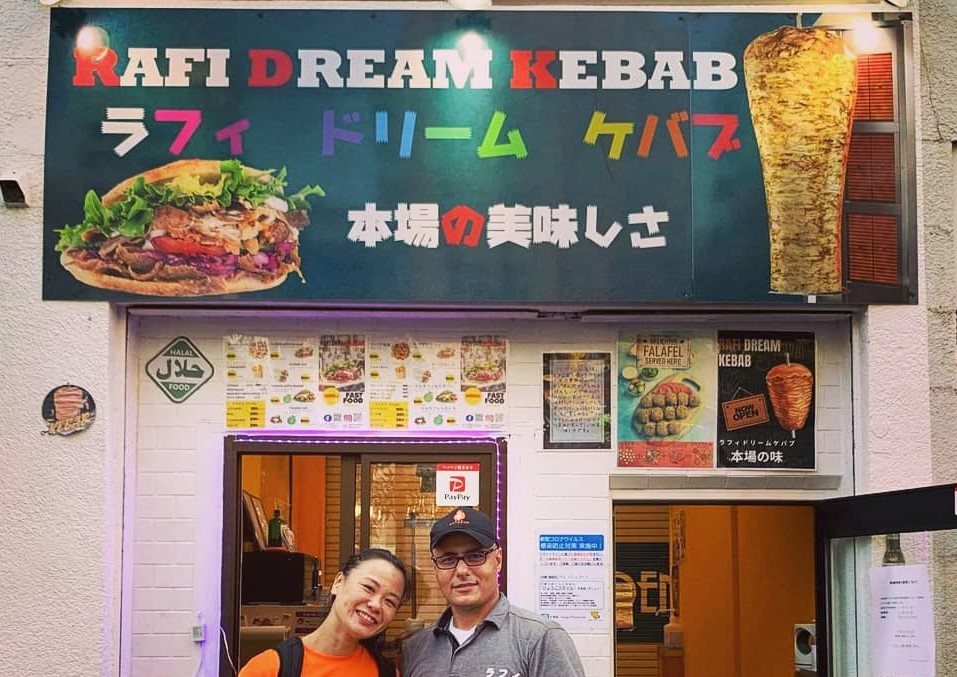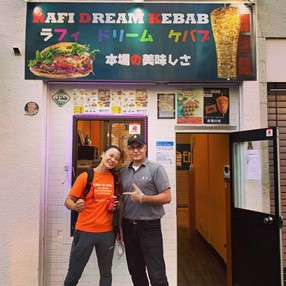
- ARAB NEWS
- 16 Jun 2025

Nader Sammouri
OSAKA: For some people in the Middle East, it may be difficult to tell apart the different delicacies in Asian cuisine. But as long as an experience is brought with the altered taste, it is accepted by most locals.
Japanese cuisine (Washoku, 和食) is more than sushi and ramen, as it offers a rich plethora of delights with its healthy ingredients like tofu, raw fish (Sashimi, 刺身), seaweed, fermented soya bean paste, and a hefty variety of pickles.
How does Arabian cuisine or at least one of its most popular feasts fit in the Japanese context of food?
Rafi Dream Kebab is one of Japan’s most delicious small kebab shops, located in Kobe city of Japan. One may also call it a shawarma shop because the variance is barely noticed in East Asia.
The store is operated by Rafik Mousa, from Egypt. Rafik eliminated the ‘K’ from his first name and made it Rafi, so it would be easier for the Japanese to spell his name.
“When I began playing around with the idea of opening my own kebab shop in Japan, I was continuously thinking over the Japanese perception of its taste. It had to be altered to suit the Japanese taste buds. At the same time, I wanted my foreign customers in Japan, including those from the Middle East, to like it as well,” Mousa said.
But his experience and knowledge regarding Japanese taste buds didn’t originate out of thin air.
“I worked for a Japanese restaurant for 3 years and gradually started understanding what customers may prefer,” Mousa told Arab News Japan. He went on to say:
“In Middle-Eastern countries, the spices that we add to our Kebabs and Shawarmas are considered to be dense on the sensitive Japanese stomach that is used to the restrained taste of natural and unaltered foods. That is why many foreign restaurants in Japan modify the authentic flavor of their home country-dishes to suit the lighter Japanese sense of taste.”

Mousa clarified how breast meat is usually preferred in the Middle East because of its affordability and ease of cooking. Conversely, Japanese people favor thigh meat or Momo (モモ).
“Karaage (唐揚げ), or Japanese fried chicken and (Yakitori, 焼き鳥), which is skewered chicken is made out of thigh or momo meat, and is some of the most desired food in Japan,” the restaurant owner explained.

The operating location proved to be crucial for Mousa. He used to operate in Miyaki town, west of Japan, and upon moving to Kobe, he discovered that people in the bigger city were much more open to foreign cuisine, and that made a huge difference for his business because he preferred clients that were willing to experiment and try new things.
“I began experimenting with spices and sauces until I grasped a taste that I was satisfied with and called it my secret spice. I constantly ask my customers for feedback so I could improve my business. Luckily, almost everyone who comes to my shop praises the food,” he said.
Mousa tries to respect the privacy of his Japanese customers because many prefer to draw a formal line at times. Generally, they also expect a certain level of store hygiene, which he tries to match. Moreover, the Japanese communication style is a given, and Rafik doesn’t mind cracking a few jokes with his customers to make them feel welcome every now and then.
He learned that one must adapt to the environment and its circumstances to thrive, and should continuously experiment, observe and improve.